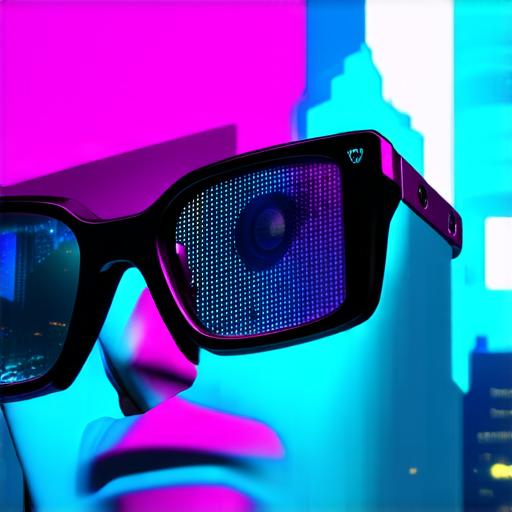Augmented Reality (AR) is a cutting-edge technology that has been rapidly gaining popularity in recent years. It refers to the use of digital content that overlays onto real-world environments, creating an immersive and interactive experience for users.
AR has numerous applications across various industries, including gaming, education, entertainment, and retail.

One of the key features of AR is its ability to create a sense of immersion for users. By overlapping digital content onto real-world environments, AR can make it feel like the user is in an entirely different world. This can be achieved through various techniques such as 3D modeling, texturing, and animation.
AR can also be used to provide users with additional information about real-world objects or locations. For example, a museum could use AR technology to provide visitors with more detailed information about exhibits, allowing them to learn more about the history or significance of an object.
Another important feature of AR is its ability to enable interaction between real-world objects and digital content. Users can interact with digital objects in the real world by using hand gestures, voice commands, or physical movements. For example, a user could use their hand to grab a virtual object in a game, allowing them to move it around or manipulate it.
The Benefits of Augmented Reality Features for AR Developers
There are several benefits to understanding the features of AR and how they impact the development process. One of the primary advantages is that it can help developers create more immersive and engaging applications. By using techniques such as 3D modeling, texturing, and animation, developers can create digital content that feels more realistic and interactive.
Another benefit is that AR can provide users with additional information about real-world objects or locations. This feature can be particularly useful in educational applications, where users can learn more about historical events, landmarks, or scientific concepts by interacting with digital content.
AR also enables interaction between real-world objects and digital content, which can lead to more engaging and interactive experiences for users. For example, a user could use hand gestures or physical movements to control a virtual object in a game, making the experience feel more realistic and immersive.
Case Studies: Successful AR Applications and Developers
There are several successful AR applications that have been developed by AR developers around the world. One such application is Ikea Place, an augmented reality app that allows users to visualize furniture in their homes before purchasing it. By using AR technology, Ikea Place enables users to see how a piece of furniture would look in their home and make more informed purchasing decisions.
Another successful AR application is Snapchat’s Lens feature. The Lens feature uses AR to add filters and effects to photos and videos, making them more engaging and interactive. Snapchat’s success with the Lens feature demonstrates how AR can be used to create fun and creative experiences for users.
For instance, Nestle launched an AR app called “Nespresso AR” which lets customers visualize how the espresso machine would look in their home before purchasing it. The app uses AR technology to overlay a 3D model of the espresso machine onto the user’s environment, enabling them to see how it would fit in their space.
Moreover, the fashion industry has also embraced AR technology, allowing customers to try on virtual clothing before making a purchase. For example, H&M launched an AR app called “H&M Virtual Try On” which lets customers see how clothes would look on them before purchasing.
Summary
In conclusion, understanding the features of augmented reality is crucial for AR developers looking to create immersive and engaging applications. By using techniques such as 3D modeling, texturing, animation, and interaction, developers can create digital content that feels more realistic and interactive. The success of successful AR applications such as Ikea Place, Snapchat’s Lens feature, Nespresso AR, and H&M Virtual Try On demonstrates the potential for AR to revolutionize the way we interact with digital content in our daily lives.
As an AR developer, it’s essential to stay up-to-date with the latest developments in AR technology and techniques to create innovative and engaging applications that push the boundaries of what is possible. With the increasing popularity of AR technology, the possibilities for creating immersive and interactive experiences are virtually limitless.
